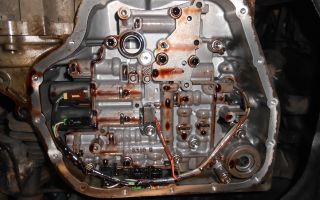Characteristics of the Toyota Corolla CVT
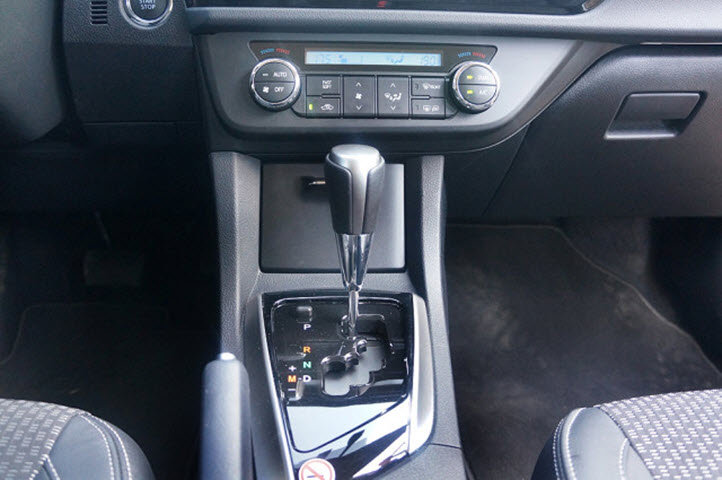
Thanks to the operation of its mechanisms, a variable speed transmission (hereinafter referred to as CVT) allows for the most efficient use of engine power. Ten years ago, CVT was considered a curiosity on domestic roads, but today more and more car owners are choosing CVT transmissions when buying new cars.
2014 Toyota Corolla
Characteristics of the variator box
In itself, a vehicle with a CVT transmission does not stand out among other cars with automatic transmissions.
It also has two pedals - gas and brake - and the same lever for switching gearbox modes - P, R, N, D - in general, everything is identical to a traditional “automatic”.
However, the CVT itself functions completely differently: this gearbox does not have a fixed first, third or fifth speed. The variator can have any number of speeds, and they all switch smoothly and imperceptibly for the driver of the vehicle.
That is why in such cars there are no hard jolts or switching. There are, in fact, no shifts themselves, as such, since the CVT continuously and smoothly changes the gear ratio as the car accelerates or decelerates.
As readers of our site remember, CVTs can be of several types: V-belt, chain or toroidal. The V-belt type CVT is the most common and is installed on most modern cars, including the 2014 Toyota Corolla.
Let's take a brief look at the characteristics of the CVT.
Automatic transmission of Toyota Corolla disassembled
Advantages:
- The first advantage, as mentioned above, is a smooth change in the gear ratio, depending on the increase in machine speed;
- High efficiency of cars with CVT;
- Excellent dynamics of the car compared to “mechanics”;
- Preventing wheel slip while driving on ice;
- More convenient vehicle control.
Flaws:
- Short service life, especially when operating a car off-road;
- “Capriciousness” of the unit when operating a car in a traffic jam, in rural areas;
- Expensive maintenance;
- Inability to tow.
2014 Toyota Corolla interior
CVT Toyota Corolla 2014 release
The relatively new 2014 Toyota Corolla is equipped at the factory with a six-speed manual transmission or a continuously variable CVT Mulridrive S.
Of course, the variator itself is of particular interest to potential buyers.
Having carefully read the technical characteristics of the Toyota Corolla, you will notice that the CVT modification of the car “eats” 300 grams of gasoline per 100 km of run than the “mechanical” version.
The essence of this gasoline saving lies in the design of the variator, which can use the engine power most efficiently. The dynamics of the car and the smooth transmission of torque in new Toyotas are ensured not only by the CVT unit itself, but also by the system connecting the gearbox to the car’s engine. In 2014 Corolla models, this function is performed by a torque converter.
Automatic transmission Corolla 2014
If you have an idea about the operation of a variator, then you know that the speed of a car is determined by the diameters of the drive and driven shafts of the gearbox.
That is, the larger the size difference, the higher the CVT performance becomes. Therefore, the engineers of the automobile concern decided to increase the gap between the sidewalls of the unit in order to obtain the optimal size of the shafts.
It should be noted that these modifications did not in any way affect the dimensions of the CVT itself.
The CVT transmission on the 2014 Corolla requires the use of exclusively original gear oil with a lower viscosity percentage. This fluid allows for optimal protection of the variator parts, while simultaneously increasing its operating efficiency by reducing unnecessary losses.
Reviews
CVT transmission Toyota Corolla
We invite you to read reviews from car owners of the 2014 Toyota Corolla.
| Positive | Negative |
| I bought a Corolla last year, 2014, and now I can’t get enough of it! I used to drive a Nissan Tiida with a standard automatic transmission, but now I decided to try something new and bought a car with a CVT. Before purchasing, of course, I went online to read reviews, but didn’t find anything specific. One complains that the variator behaves too “capriciously” on our roads, constantly breaks down, and so on. Others write that there is nothing more reliable than a variator. So, I’ve been driving a Toyota for a year now and I can’t say anything bad about CVT. It behaves adequately on the roads, accelerates - don't worry, mom! I can’t say anything about maintenance, since I haven’t encountered it yet, but I can say a lot about the adequate operation of the box. First of all, this is driving in winter. As soon as the snow fell and the frost hit, the roads froze. I usually don’t ride in this weather, but here I urgently needed to go to the other end of the city. I thought I’d start wearing it now, so I had to drive carefully. So the variator maintains such grip on ice that any studded tire would be jealous! I have only positive impressions so far! | I drive a 2014 Corolla continuously variable transmission. I've been traveling for less than a year, but my indignation knows no bounds. The first problem I encountered was the “parking” mode. Once I went to visit friends and left my car outside the window overnight. In the morning, when starting to go to work, the lever does not shift. Frozen and here “on you.” I pulled it for a very long time, in the end, I finally took it off the speed, I had to postpone the work and go to the dealer (I only drove 50 thousand km). They started looking, thought and thought, and said that the limit switches “flyed.” The repair, of course, is free, since the car is under warranty, but I didn’t count on such a pain in the ass with such a low mileage. I would also like to add that a CVT is not for our roads. I drove a regular automatic and had no problems, but after repairing the limit switches, it seems to me, the car began to drive completely differently. Acceleration is not so fast, it takes a long time to accelerate, in short, I’m thinking about selling my “iron horse”. |
| I also decided to write a review. I bought a Corolla for my wife last year, and I sometimes drive it myself. Accordingly, all technical maintenance is my responsibility. So, as they write on the Internet, there are actually more than enough reasons for a CVT unit to break down. But almost all of them are the result of improper maintenance or operation. If the manufacturer’s instructions say that you need to start a car in winter using a certain technology, then you need to adhere to it. What did you want? First you drive haphazardly, and then you complain about the CVT malfunction. Firstly, CVTs are really not designed for off-road driving - they “kill” much faster. Secondly, if the manufacturer said to pour this kind of oil into the box, then that means that this is the only type of oil that needs to be poured! And so our drivers first fill up with some kind of counterfeit product, bought somewhere unknown and manufactured somewhere unknown, and then their variator breaks down. This is not a “penny” into which you pour any oil, and ride to your health. | I drive a 2014 Corolla. It looks like a foreign car, but it also has a lot of shortcomings. Firstly, in winter condensation forms in the trunk of a car. As for spare parts, you won’t find the original anywhere! Brake pads cost five thousand rubles (1,500 hryvnia) per set, but the originals are not available in any store! Even the dealer says - leave a request and maybe we will bring them to you in a month or two, in general, “after the rain on Thursday.” The suspension leaves much to be desired, but the CVT is a separate issue altogether. It can quite easily become dull in a traffic jam, especially when crossing a traffic light on a flashing yellow one. It starts to get “stupid” for about five seconds, then it works normally again. Again, I went to the dealer - there the manager looked and said: “Well, does it work?” Like, when it breaks down, then come, or rather, come with a tow truck. |
| I drive a Toyota Corolla, I bought a new one in 2014 and took it from the dealership. I used to drive a Zhiguli, but I saved up some money and bought myself a Japanese car. Before purchasing, I read a lot of negative reviews about this car model and the CVT transmission in particular. Maybe I’m not used to such cars, or my requirements are too low, but the CVT is something! Previously, I once drove a friend’s X-Trail, so his two-liter engine is not as playful as my 1.6-liter engine. Or maybe it's the variator. In general, I’m skating and I can’t get enough of it. I travel a lot, I’ve already covered more than 100 thousand km in a year, as I travel all over the country. I decided not to experiment with replacing the transmission consumables; after all, this is not a Zhiguli. I went to the official dealer, saying I needed to change the oil. They sent me to their service station, where the technicians opened the box to look, and the oil there was pure! No metal shavings or other wear products, as if it had just been poured! Therefore, we decided not to do a complete flush of the system, but filled in 4 liters. It's not too expensive for the money, I have fun riding! | I shouldn't have bought this car! Now I’ll explain what’s what. I live outside the city in a village, so I go to work every day. Our road to the city, to put it mildly, is not very good. For half a year I drove the CVT back and forth, and at one point it began to “growl”, after which the car completely stalled. Of course, the speeds were not changed. What to do? We have a variator, as the manager told me, it’s still great - you can’t tow it, you had to call a tow truck! We went to the dealer, where a guy climbed into the box and started looking and said that the belt had broken. Yes, yes, that same fucking steel belt! Why did it break? Because Corollas must be driven on a flat paved road. In general, I had to leave the car at the dealer, they said that when the part arrived, we would immediately replace it. At first they said to wait about a week or two. As a result, I waited almost a month and a half, but the repairs were still done free of charge. |
| I've only driven one and a half thousand kilometers since I've only had the car for a week. In general, I’ll say this - I’m overall pleased with the purchase. I compare it with the previous car - Mitsushibi Lancer. These are two fundamentally different cars - Lancer is a more aggressive car, and Corolla is calmer and more balanced. But, thanks to the “Sport” button, the Corolla can get hot on the track. Actually, it was on the track that I learned all the capabilities and features of the CVT. It feels like real professionals worked on the gearbox. No delays when switching gears, everything works quickly, like clockwork! The only thing I didn't like was the poor protection of the wing arches. That is, when driving off-road, you can very well (I would even say too well) hear the sound of pebbles knocking. And so, in general, I’m happy with everything, it’s not the car—it’s a real beast! | |
| I bought my first Corolla last year, and it was assembled at the same time! First of all, I would like to note the design, as for me, this Corolla is much better than the Camry. And it has become a little larger in size, which means the interior is more spacious. Of course, before purchasing, I took part in a test drive and liked everything. Especially the CVT gearbox, I’ve never had one like this before! At first I had my doubts about the CVT - friends say that this gearbox is unreliable, you’ll drive it for the first 100 thousand, then problems will supposedly start. Well, I thought for a long time and, in the end, came to the conclusion - it wasn’t there, I had to buy it. And you know, I can’t say anything bad yet! For metropolitan traffic jams, a Corolla with a CVT gearbox is just what you need. Except that on the track everything is a little not so good. It accelerates and overtakes perfectly, but at will. Maybe I haven’t fully “made friends” with it yet, after all, this is my first “automatic”; before that I used to drive a manual all the time. In general, I’m happy with the machine, I give it a “plus”! | |
| I bought a Corolla for my son last year, and after about 40,000 miles the first problems started. When starting the engine and while driving, an incomprehensible hum was heard from the variator, so I decided to investigate. As it turned out, the normal operation of the box was hampered by wear products that appeared as a result of improper operation. The oil was changed, and all wear and tear products were gone with the old consumables. I took the car for myself and gave my son a manual Honda. I've been driving for almost a year, no problems. Not a car - a song! |
Toyota Corolla 2014 dashboard
As you can see, reviews about a car with such a gearbox are very different, so it’s up to you to decide whether to drive a CVT or not. Only one thing is clear - to increase the service life of the CVT, proper operation is necessary: it is this that determines its performance as a whole.
Video “Test drive of Toyota Corolla 2014”
This video shows a test drive of a Toyota Corolla.
Did you like our material? Did you learn anything new from it? Tell us about it - leave your review!
Source: http://AvtoZam.com/toyota/corolla/harakter-korobki-variator/
What automatic transmission is Toyota Corolla e180?
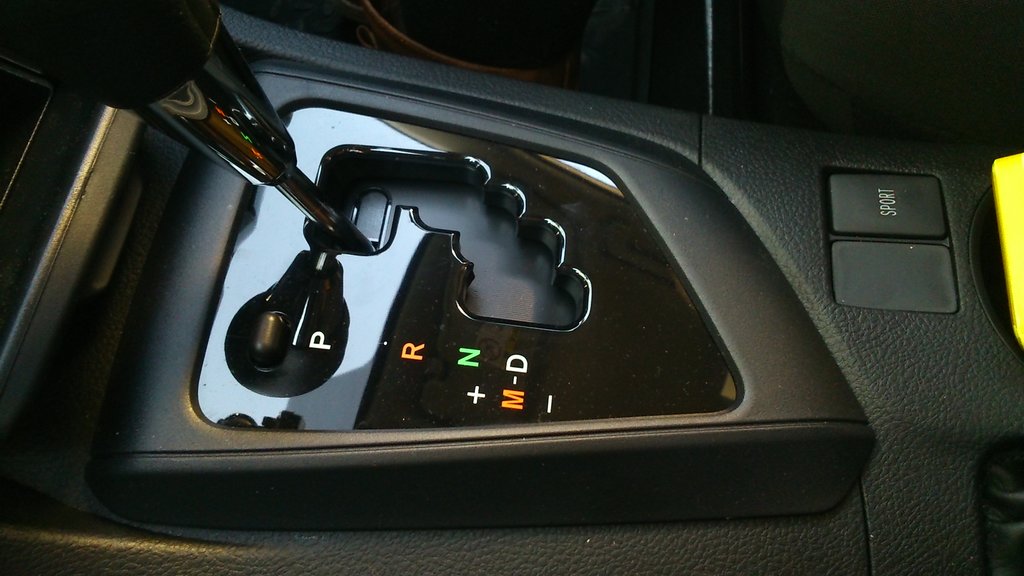
Since 2006, the Aisin company has been producing CVTs (CVT) of the K310 / K311 series for Toyota, which are ideal for gasoline engines with a volume of 1.5 - 1.8 liters. According to most, the unit is quite reliable!
These boxes have been installed on a large family of Toyotas in the Japanese and European markets since 2008.
https://www.youtube.com/watch?v=KrfsG1ljrYc
For the Toyota Corolla E180, this CVT (311) was modernized and switched to a modern working fluid: Toyota Genuine CVTF FE.
What kind of CVT is in Toyota Corolla?
On Corollas produced from 2012 to May 2015, a K311 series variator (30400-2020) was installed.
And after the release after 05.2015 they began to install a more modernized box of the series - K313 (30400-20110).
CVT device
The Toyota variator of the three hundredth series is a V- belt type , consists of two pulleys and a V-belt (metal) that connects them.
The principle of operation of such a mechanism is that when the speed changes during movement, the pulleys move closer or further away, and the torque ratio gradually increases or decreases.
All CVTs are equipped with a torque converter, which serves as a mechanism for transmitting torque from the gearbox to the engine. Thanks to this, smooth acceleration and high dynamism are achieved, rapid acceleration from a standstill without jerking.
What doesn't the variator like?
How to extend the life of this variator? In my opinion, it is necessary to understand what causes problems.
The operation of the CVT directly depends on the condition of the working fluid. Oil saturated with chips (from belt wear), as it forms, grinds down the metal of the rotating elements of the variator: - for this reason, we monitor the condition of the working fluid !
What causes the gearbox mechanisms to wear out as quickly as possible:
- Overheating of the working fluid during prolonged movement at high speeds;
- Sudden starts and braking;
- Driving on a cold CVT;
- Towing a car or trailer.
In other words, how to properly operate a car with a CVT?
These boxes love a quiet ride without jerking or violence. I don’t mean driving like a pensioner (figuratively speaking), but normally with moderate dynamics. You also need to understand that our Korollka is more designed for driving in urban conditions than for long distances. Although I really like how it drives at 180 km/h - confidently and easily.
I would also not recommend anyone towing or pulling a trailer. This wears out the variator a lot! It is not designed for such loads.
It is advisable to warm up the automatic transmission before driving, holding the car in position D for at least one minute!
If you stick to this operation, the CVT on the Corolla will last much longer.
Owner reviews
According to some reviews on the drive, the owners ran over 200,000 km on this Varik, even without changing the working fluid.
Others change the oil already at 20-30 thousand, and when hiding on the magnets, there is an abundant deposit of metal dust, and this is with gentle operation.
My personal opinion is that the CVT K311 and K313 gearboxes are quite reliable with a long service life, subject to a calm driving style, which I began to adhere to over time, and timely maintenance, namely replacing the working fluid every 40,000 km.
Source: http://Corolla-e180.ru/obzor/CVT.php
Let's talk about the CVT variator — logbook Toyota Corolla 2013 on DRIVE2
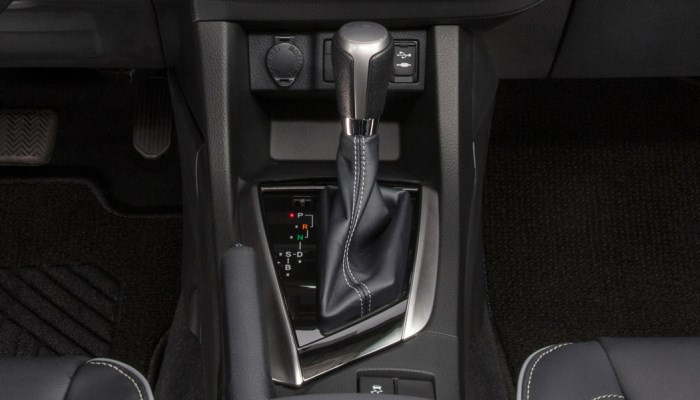
Well, it's time to talk about the Corolla Multidrive S variator.
I’ll tell you about my feelings, observations and comments. For the average user, in principle, there cannot be any special features - an ordinary automatic transmission. But over time, some features stand out that either frighten the owner or are annoying.
And if you previously owned a car with a conventional torque converter or robotic gearbox, then there are more questions. I won’t go into the intricacies of the device (there’s plenty of information on the Internet), I’ll only tell you about the noticeable features in the control.
Let me start with the fact that the CVT is a continuously variable automatic transmission, but, in our case, it has 7 virtual gears. This gives us the feeling that the transmission is a seven-speed torque converter. We can also control these gears in “M” mode. Speaking of modes, the box has standard automatic transmission modes: P, R, N, D and M.
Modes P and N are identical, but in mode P the gearbox output shaft is purely mechanically locked from turning. In these modes the car can be started, in others it is not. In addition to the standard modes, there is a SPORT mode, which is activated by the corresponding button next to the gearbox selector.
It allows the engine to spin until the cut-off point. This mode is very convenient when overtaking on the highway - it allows you to use the full potential of the engine. Let's go.
I started the car, pressed the brake pedal, switched the selector to mode D and did not release the brake pedal immediately, but only after 2-3 seconds, allowing the box to turn on completely, since it does not switch instantly. If you release the brake pedal immediately after turning on the mode, you can feel a significant push, as if the car was pushed strongly from behind. This push does not bring anything good to the box.
By the way, there is one significant feature - if you press the accelerator pedal hard when the car is on a slippery road surface, then the following situation will occur - the engine will increase speed, the drive wheels will slip into the axle box and the gearbox will immediately reduce the traction force to zero, while the engine will respond to pressing the accelerator by increasing the speed.
The driver gets the feeling that the car is coasting. Traction appears after 4-6 seconds if you do not press the accelerator. The so-called anti-slip mode is activated. Some say it can be turned off. But the same mode works on cars that are not equipped with an anti-skid system, i.e.
this is nothing more than a feature of the variator’s operation, designed to protect it from belt rupture. In my opinion, this is quite convenient, although not always safe, for example, when I try to wedge sharply into traffic, I can get caught in the butt or caught in the forehead if this happens at the moment of sudden overtaking, when you are already in oncoming traffic.
In this case, it is better to refuse to overtake and go back. The updated firmware has reduced this time to a minimum, which means overtaking is safe.
Another feature that manifests itself during intensive overtaking is the freezing of high engine speeds immediately upon completion of overtaking.
I often notice this when I sharply overtake and wedge into traffic, braking to the speed of the flow - the engine speed remains elevated, despite the fact that I do not press the accelerator at all. The intensive overtaking program is activated and the gearbox holds the speed so that the driver can continue overtaking.
If you lightly press the accelerator and hold it, the speed will drop to nominal after 4-5 seconds. Our gearbox also allows you to use a mode such as engine braking, for example, during a long descent from a mountain. This works great in M mode.
We lower the gears, and voila - the car slows down without using the brake. If you want to roll down a hill in “neutral”, then turning on N mode is not necessary (and not advisable), the box itself maintains neutral in D mode without pressing the gas.
It’s just that in this mode there is no engine braking as is the case with manual transmissions or classic automatic transmissions. In winter, when starting to move, the gearbox maintains higher engine speeds - this is due to the fact that it warms up so much.
It can also increase engine speed even when the engine is warm, if the temperature is so low that the oil in the box cools below operating temperature while driving. This is normal. Actually, this is all I have to say at the moment about our box. If I remember anything, I’ll add it.
Don't judge strictly - I'm not a techie. All conclusions are based on our own feelings.
Source: https://www.drive2.com/l/2729988/
CVT for Toyota Corolla: reviews from owners, reliability of a continuously variable transmission – Article Holding
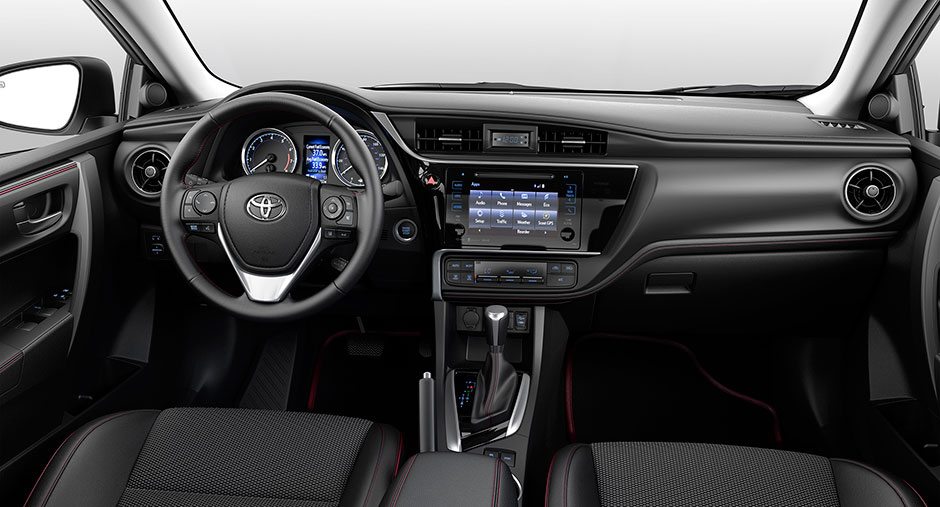
1216 Views
Starting from the tenth generation, the Toyota Corolla began to be offered not only with automatic and manual transmissions, but also with a CVT.
This control method provides a smoother change in the speed of rotation of the disks and does not require gear shifting.
The Toyota Corolla's CVT is quite reliable and contributes to maximum driving comfort, rapid acceleration and absence of jerks, and is also characterized by economical fuel consumption.
If the first 9 generations were equipped with either an automatic transmission or a manual transmission, then the next generation was a breakthrough in changing control characteristics. A continuously variable gearshift mechanism began to be offered as an alternative, starting with the 10th generation, which was released in 2006 (in America in 2008).
Toyota did not install such a box for a long time, although its reliability and smoothness when switching from one speed to another are an obvious advantage that giant automobile concerns have confidently used around the world. Starting from 2013 (11th generation of Toyota Corolla), cars are offered with CVTs in all trim levels.
On this Toyota model, mainly V-belt type CVTs were and continue to be installed. Such units are used for small volume units, up to 2.0 liters. For more powerful engines, toroidal variators are used, which have a different operating principle.
The design of a V-belt variator is fundamentally simple - it consists of two pulleys and a V-belt that connects them. Each modern CVT model is equipped with a metal belt.
The mechanism used in the Corolla to transmit torque and decouple from the engine is a torque converter. It is this mechanism that contributes to the high degree of smoothness, as well as the long service life that such a box is characterized by.
As the speed changes while moving, the pulleys move closer or further away, and the torque ratio smoothly increases or decreases within the required limits.
Operation, repair features and degree of reliability
The peculiarity of operating a car with such a gearbox is that it provides a smooth ride, which is not inherent in even the most modern automatic transmissions with the maximum number of steps, since steps or speed transmissions in the physical sense are not provided in the presence of a variator.
Among other operational advantages, as evidenced by reviews from owners of cars of this model, from 2008 to the present (2017), one can note high dynamics and rapid acceleration without jerking, and a high ability to move away without slipping.
However, there are also disadvantages, including the high cost of repairs, which will have to be carried out at least every 120 thousand km, as well as the not very long durability of the mechanism.
It is recommended to change the oil no later than 50 thousand km and simultaneously replace the oil filter itself.
CVTs are very demanding on its purity and quality, which is precisely why there can be problems in the operation of the unit.
Many reviews from owners who like to drive fast indicate that with a variator, there is no possibility of a sudden shift to a lower gear (since there is no possibility of a sudden change in torque).
You should not deny yourself comfort and pleasure, because this particular transmission is a full-fledged comfortable assistant, providing smooth and dynamically changing speed, providing a pleasant feeling while driving. Numerous, mostly positive reviews from owners confirm how reliable the variator is, no matter what models it is installed in.
Mikhail, driving experience – 21 years
I bought a 2013 Corolla, I was looking for one with a CVT, I wanted new sensations, especially since I read a lot of conflicting opinions. I've been riding CVT for 3 years now, so far no complaints. No maintenance has been required yet, it works like a charm, I was especially pleased with the grip on ice, it drives great on slippery roads.
Igor, driving experience – 5 years
My old lady is a 2008 model, and I’m glad that I fell for the seller’s persuasion about the CVT. I haven't had any problems with it yet. The main thing is to use it correctly, according to the instructions. If it doesn't turn on for you, then you're doing something wrong. And, of course, you shouldn’t overuse off-road riding. Don't kill cars!
Sergey, driving experience – 11 years
You ask me, is the CVT reliable? My answer is yes! Very, very reliable! My 2014 Corolla has already driven 115,000 miles, and at the service station, when passing the technical inspection, the technicians looked at me with round eyes - the oil was the purest. They topped it up to the required amount, but didn’t do a complete flushing of the system. All OK. It didn't cost much for the money.
Ivan, driving experience – 13 years
I've only been driving for a week, I bought myself a beautiful 2008 model with a CVT. I really liked its feature of switching to the required mode smoothly and softly. On the highway it’s just a blast. Although many wrote that she was not too playful. I don't agree. The car is a plus.
Conclusion
Reviews from car enthusiasts and test drives note the smooth ride and other good dynamic characteristics of Toyota Corolla CVT gearboxes. It is also important that car owners note some fuel savings. However, we must remember that it is important to handle boxes of this type correctly when driving.
Source: clubmashin.ru
Save the article to your social network!
Source: https://teora-holding.ru/variator-na-tojota-korolla-otzyvy-vladeltsev-nadezhnost-besstupenchatoj-korobki/
CVTs for TOYOTA COROLLA 2014
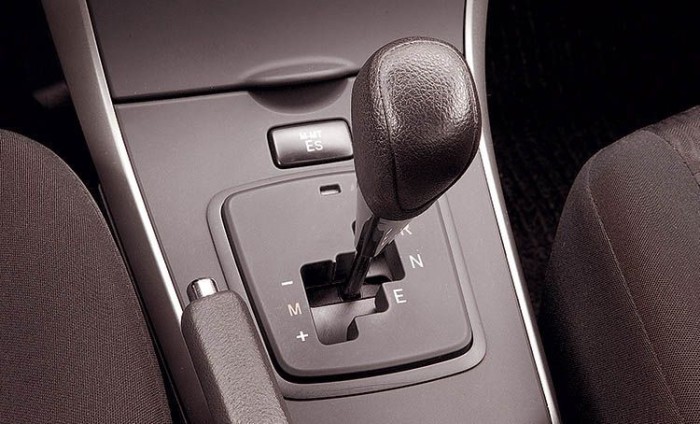
CVTs on the 2014 TOYOTA COROLLA, like any CVT, require qualified repair work, which is offered by car services. Here you need to know not only the diagrams that are followed when repairing CVT gearboxes in 2014, but also the principles of truly high-quality performance.
The main condition is the use of spare parts - the components must be certified and suitable for the CVT of the car. It is also important to have specialized tools when troubleshooting problems.
In this case, you can guarantee that repairs are affordable and that they are carried out competently. Any responsible executive is guided by this rule.
- Computer check of CVT (cvt307E – code)
CVT diagnostics on a computer service code cvt307E, inexpensive. High quality and fast.
Computer diagnostics of variator price by number cvt307E, any area, call back.. Possibility of online recording.
In stock
- Replacement of the variator planetary mechanism (cvt28B1 – code)
Qualitatively replace the planetary transmission of the CVT service code cvt2EF9, execution strictly within a fixed time frame. Professional equipment and significant experience of service staff.
Replace the planetary mechanism of a CVT gearbox in Moscow, number cvt691D0E19, free consultation. Find a car service near the metro.
In stock
- Defective variator (cvt2F4B – code)
Defect the CVT box, service code cvt2F4B, all areas. Extensive experience of specialists.
CVT defect number cvt68EB418F, order by mail, acceptable price list.
In stock
- 2014 TOYOTA COROLLA CVT bell repair
Repair the variator bell service code cvtE1C5, make an appointment online or by phone. Guaranteed quality.
Restoring the CVT bell service code cvtE1C5, select a technical center in Moscow. Fixed cost per standard hour.
In stock
- Replacing the variator oil pump according to cat. n. cvtE0E1
Replace the CVT oil pump service code cvtE0E1, favorable discounts. Convenient conditions for individuals and legal entities.
Replace the CVT oil pump service code cvtE0E1, near the metro station. Fixed cost per standard hour.
In stock
- CVT transmission bulkhead (cvtC314 – code)
Bulkhead CVT number cvt1022, fixed standard hour. Guaranteed deadlines.
Go through the variator, restoration with disassembly and assembly, service article cvtDB7BD595, in a convenient service. Workshops near the metro.
In stock
- Checking the variator according to article number cvtBBEE1B04
Check CVT price list by number cvt9DFF, tight deadlines. Anywhere, without recording.
Diagnose variator problems price by number cvt1C03, experienced specialists. Choose a car service near the metro.
In stock
- Replacing the starting clutch TsVT according to cat. n. cvt36AF
Replace the starting clutch of a CVT transmission, service code cvt36AF, affordable prices. Sign up by phone or online.
Replace the CVT starting clutch quickly and efficiently, service code cvt36AF, a large selection of car services. Selection of specialists.
In stock
- Overhaul of CVT (number cvt45162C67)
Recapitalize CVT in Moscow number cvt762D, work with a guarantee. Make a pre-registration.
Overhaul of the CVT transmission service code cvtbwJqSKBjEy, promotions, special price possible..
In stock
Check (diagnostics)
Diagnostics of the CVT transmission for 2014 should be carried out in full format, since this is how the gearbox can be fully checked and evaluated. Comprehensive assessment activities are the key to reliable identification of defects and, more importantly, the causes of malfunctions.
Recording is the optimal solution for completing work. This can be done either by phone or by email.
Source: http://cvt-rem.ru/remont-cvt-toyota/remont-cvt-toyota-corolla/2014


